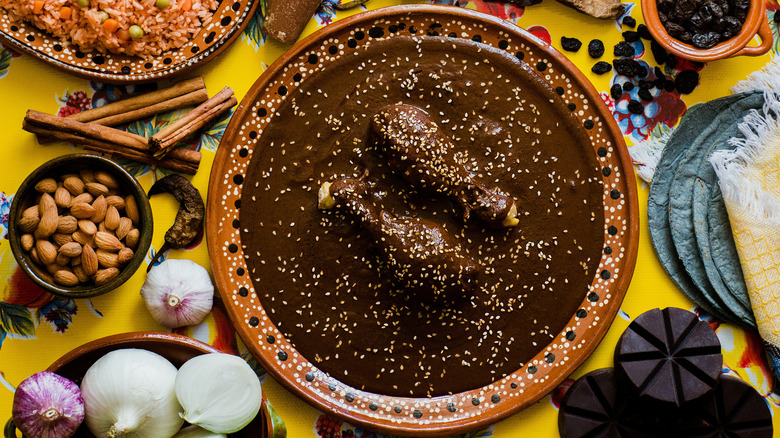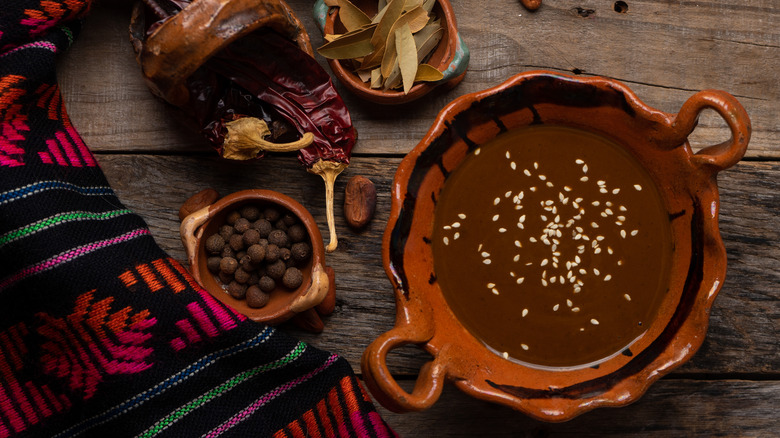Hot Take: Perfecting Mole Is About Technique, Not The Ingredients
Mole sauce has long been an indispensable part of Mexican cuisine, a rich tapestry of flavors that serves as a testament to the country's culinary heritage. Often mistakenly reduced to "chocolate chili sauce," mole is so much more. The term "mole" essentially refers to any bold, multifaceted sauce, and there are countless regional variations with each one being as unique as the last.
While the ingredients can vary — ranging from chilies, chocolate, and nuts to spices and stale bread or tortillas — the secret to a spectacular mole, according to Chef Rick Martinez, author of the acclaimed cookbook "Mi Cocina," isn't in the ingredients — it's the technique.
Chef Martinez's hot take, which he shared with Tasting Table, brings a refreshing perspective to this age-old dish, emphasizing that the heart of mole isn't necessarily about sourcing the rarest chili or the most elusive spice. Instead, it's about mastering the methods that transform these ingredients into the silky, deep, and complex sauce we know and love. To make an incredible mole, you need to start with basic techniques, including roasting, blending, and simmering.
Technique tips for the best mole
Before anything goes into the pot, ingredients like chilies, tomatoes, and spices benefit from a good roast. This process deepens their flavors and adds a smoky note to the sauce. Use a dry skillet or an open flame to char these ingredients until they are just blackened. Once your ingredients have been roasted, they should be blended into a smooth paste. This can be a laborious process, especially if done traditionally with a mortar and pestle. However, the smoother the paste, the silkier the mole.
Once the paste is ready, it is slowly simmered, often with stock, until it thickens into a lush sauce. This can take time, sometimes hours, allowing the flavors to meld together. The secret? Patience. If your mole variety calls for chocolate, it's typically added at the very end, giving the sauce its characteristic richness without overwhelming the other ingredients. Continuous stirring, especially as the sauce thickens, is essential to prevent burning or sticking. To ensure your mole has the smoothest texture, strain it through a fine sieve or mesh strainer with the back of a spoon or spatula.
In essence, while the ingredients are essential to the type of mole you're making (Poblano, Oaxaqueño, Coloradito, and more), the technique, as Chef Martinez suggests to Tasting Table, is the linchpin. When executed with patience and passion, even the most basic ingredients can transform into a velvety mole sauce that's truly magical.

